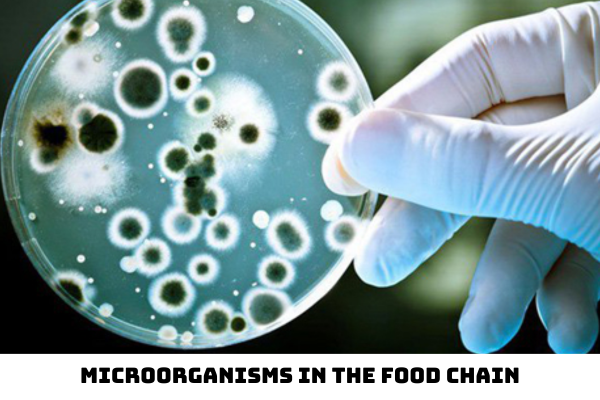What is Vietnam Standard TCVN 4884-2:2015 (ISO 4833-2:2013 on amendments to technique 1:2014) on microorganisms in the food chain about?
- What is the scope of regulation of Vietnam Standard TCVN 4884-2:2015 on microorganisms in the food chain?
- What are the principles of application of Vietnam Standard TCVN 4884-2:2015?
- What are the instructions for the preparation of the culture media and diluted fluid under Vietnam Standard TCVN 4884-2:2015?
What is the scope of regulation of Vietnam Standard TCVN 4884-2:2015 on microorganisms in the food chain?
Under Section 1 of Vietnam Standard TCVN 4884-2:2015, the scope of regulation is specified as follows:
This Vietnam Standard specifies a horizontal method to enumerate microorganisms that can grow and form colonies in solid media after aerobic annealing at 30°C. This method applies to:
- Food and animal feed;
- Environmental samples in food and feed production and processing areas.
This Vietnam Standard applies to:
Products containing heat-sensitive microorganisms that dominate the total system (e.g., cold-loving microorganisms in frozen and chilled foods, dry foods, other foods that may contain heat-sensitive microorganisms).
Products containing obligate aerobic bacteria capable of forming a significant proportion of the total coefficient (e.g. Pseudomonas spp.).
Products containing small particles can be complicated to distinguish from colonies in the pouring dish.
- Dark products interfere with the identification of colonies in the pouring dish.
Products that are assessed for quality should be differentiated through different colony species.
In addition to the manual dish implantation technique, this Vietnam Standard also regulates the use of twisted implantation equipment, a fast method for performing counting surface colonies.
The applicability of this Vietnam Standard is limited when testing fermented foods and animal feeds, other environments or incubation conditions are more appropriate. However, this method applies to such products despite needing to be more effectively detecting the dominant microorganisms in the products.
For some sample bases, the method specified in this Vietnam Standard may give results different from those obtained using the method specified in TCVN 4884-1 (ISO 4833-1).
What are the principles of application of Vietnam Standard TCVN 4884-2:2015?
Under Section 4 of Vietnam Standard TCVN 4884-2:2015, the principles of application of Vietnam Standard TCVN 4884-2:2015 are specified as follows:
- The specified amount of the sample, or the specified amount of the original suspension, in the case of products in other forms, is poured onto the surface of the solid agar culture in a Petri dish.
- Other dishes are prepared under the same conditions, using a decimal diluted solution of the original sample or suspension.
The dishes were annealed under aerobic conditions at 30 °C for 72 h.
- Calculate the number of microorganisms in one gram or one milliliter of the test sample according to the number of colonies obtained in dishes containing less than 300 colonies.

What are the instructions for the preparation of the culture media and diluted fluid under Vietnam Standard TCVN 4884-2:2015?
Under Section 5 of Vietnam Standard TCVN 4884-2:2015, the preparation of the culture media and diluted fluid is specified as follows:
(1) General requirements: Prepare, manufacture and test the performance of culture media according to TCVN 8128 (ISO 11133).
(2) Diluted fluid: Use diluted fluids specified in TCVN 6507 (ISO 6887) for related products or specific standards related to products to be tested.
(3) Agar medium: agar counting disc (PCA)
-Ingredient
+ Enzymatic casein hydrolysis product: 5.0g
+ Yeast extractor: 2.5g
+ Anhydrous glucose (C6H12O6): 1.0g
+ Jellycha: from 9 g to 18g
+ Water: 1 000ml
a: Depending on the freezing power of the jelly.
When inspecting dairy products, add 1.0 g of skimmed milk powder to one liter of culture media. Skim milk powder should not contain inhibitors.
- Preparation:
+ Dissolve the above ingredients or dry the complete media in water, heat if necessary. Mix thoroughly and let stand for a few minutes.
+ Adjust the pH so that after sterilization it is 7.0 ± 0.2 at 25 °C, use a pH meter (6.5), if necessary.
+ Distribute the medium into jars or bottles (6.9) of appropriate capacity; sterilize in a pressure autoclave (6.1) at 121°C for 15 min.
+ If used immediately, cool the environment in a water bath (6.4) to maintain the temperature from 47 °C to 50 °C before use. Otherwise, allow the medium to solidify in a jar or bottle. Before use, completely melt the medium in a boiled water bath, then let it cool in a water bath (6.4) maintaining a temperature between 47 °C and 50 °C.
- Preparation of jelly dishes:
+ Pour from 15 ml to 20 ml of medium into the array of sterile Petri dishes (6.6) and let solidify.
+ These dishes can be stored at (5 ± 3) °C for up to 4 weeks.
+ Immediately before use, dry the agar discs as prescribed in TCVN 8128 (ISO 11133).
- Culture media performance test:
+ General requirements: In this Vietnam Standard, use disk counting jelly is a non-selective medium. Check performance according to TCVN 8128 (ISO 11133).
+ Performance
++ Annealing: Temperature (30 ± 1) °C in (72 ± 3) h
++ Verified strains: Escherichia coli WDCM 00013 or Escherichia coli WDCM 00012a [World Microbial Data Center (WDCM)].
Bacillus subtillis subsp. spizizenii WDCM 00003a
Staphylococeus aureus WDCM 00032 or WDCM 00034
++ Control medium: Soybean jelly - trypton
++ Verification method: Quantitative
++ Criterion: Performance ratio (PR) ≥ 0.7
a: The strains used in the testing laboratory are minimal. See Bibliography [2] for information on the number of selective culture strains and related details.
LawNet